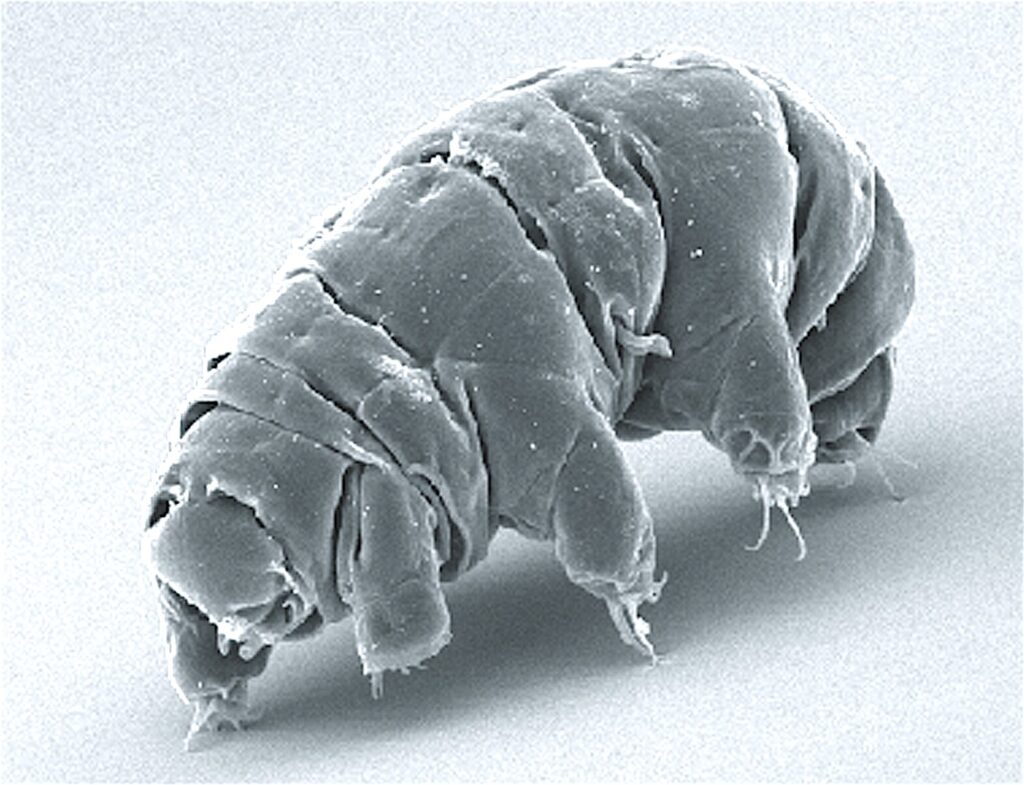
A newly discovered protein from Earth’s hardiest creature, the tardigrade, is inspiring groundbreaking therapies for cancer and cardiovascular diseases. Known as water bears or moss piglets, these microscopic organisms can endure extreme conditions, including boiling heat, freezing cold, and crushing pressure. Remarkably, tardigrades are the only known animals to survive the vacuum of outer space, tolerating radiation levels up to 2,000 times higher than what human cells can withstand. Scientists have long been intrigued by this resilience, seeking to uncover the secrets behind their survival.
In 2016, researchers identified a crucial element of the tardigrade’s defense mechanism: a unique gene that produces a protein called damage suppressor, or Dsup. This protein, found exclusively in tardigrades, plays a pivotal role in protecting DNA from damage. When introduced into human cells, Dsup confers increased resistance to radiation. The discovery has sparked a global scientific effort to understand Dsup’s function, with the ultimate goal of developing new therapies to shield human cells from DNA damage.
How Dsup Protects Tardigrade DNA
Scientists have proposed several theories on how Dsup protects DNA from radiation. My recent research reveals that Dsup interacts intimately with DNA, binding along its entire length rather than at a single point. This interaction causes DNA strands to unwind slightly, potentially reducing their susceptibility to radiation-induced damage. Dsup’s flexible structure, akin to a shifting spaghetti noodle, allows it to adapt and provide protection in various forms.
Other researchers suggest that Dsup acts as a physical shield, coating DNA to block radiation. Some believe it enhances the cell’s repair mechanisms, swiftly addressing damage before it can have harmful effects. It’s plausible that Dsup employs multiple strategies simultaneously, given its ability to protect against diverse types of radiation and the toxic byproducts they generate.
“Understanding Dsup could one day help people better protect their own cells—bringing a bit of the tardigrade’s extraordinary resilience to human health.”
Using Dsup to Advance Medicine
Scientists are exploring the potential of Dsup in medical applications, particularly in conditions where DNA damage is a critical factor. Since DNA damage is a hallmark of nearly all cancers, Dsup-inspired treatments could potentially prevent cells from becoming cancerous. Furthermore, Dsup might protect healthy tissues during cancer treatments like radiation or chemotherapy, which often harm healthy cells while targeting cancerous ones.
Dsup’s potential extends beyond oncology. During heart attacks or strokes, tissues experience oxidative stress, leading to significant DNA damage. This stress exacerbates disease severity and impacts long-term outcomes for cardiovascular patients. If Dsup can shield DNA during these events, it may mitigate cellular damage and improve patient prognosis.
Preliminary animal studies offer promising results. In one experiment, scientists used mRNA technology, similar to COVID-19 vaccines, to deliver Dsup’s genetic instructions to mice. When exposed to high radiation doses, mice producing Dsup exhibited significantly less DNA damage than their untreated counterparts, underscoring Dsup’s protective capabilities.
Dsup in Agriculture, Space, and Beyond
Beyond medicine, Dsup holds promise in agriculture, space exploration, and even data storage. Researchers have engineered rice and tobacco plants to produce Dsup, enhancing their resistance to radiation—a promising development for reducing crop damage.
In space biology, Dsup could help astronauts endure the intense cosmic radiation encountered during long-term missions. Additionally, some scientists are investigating the potential of using tardigrades for ultrastable data storage. Digital information, converted into DNA sequences and integrated into the tardigrade genome, could be protected by Dsup from extreme environmental conditions.
What’s Next for Dsup?
Since its discovery nearly a decade ago, Dsup has captivated the scientific community with its potential to drive technological advancements. However, much research is still needed to fully understand how this enigmatic protein functions in living organisms. Numerous research groups worldwide are actively studying Dsup’s unique properties.
The journey to harness Dsup’s power illustrates how scientists can draw inspiration from tiny creatures like tardigrades. By unraveling the molecular mysteries of these resilient organisms, researchers are paving the way for innovative tools to combat human diseases and propel biotechnology forward.







